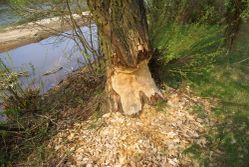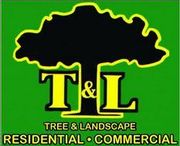4 Common Tree Hazards Explained by Greater Rochester’s Tree Care Experts

Well-maintained trees add privacy and beauty to any property. When home and business owners throughout upstate New York need a reliable tree care team, they count on T & L Tree and Landscape. This experienced tree and landscaping company specializes in affordable tree services like planning and seasonal pruning and shaping, as well as emergency tree services that keep your property safe.
Routine tree care can help the trees on your property stand tall and grow properly. Neglected trees can become potential hazards, especially when the winter weather brings strong winds and heavy precipitation. Knowing how to identify common tree hazards can help you protect your home or business.
4 Common Tree Hazards Explained By Your Local Tree Care Experts
1. Split Or Cracked Wood
 Although some cracks and flaws are natural features of tree bark, deep splits and fissures may be cause for concern. Winter weather conditions can lead to these types of damage: Heavy snow or ice can pull tree limbs to their breaking point, while dry air and strong wind can make limbs more brittle. Fortunately, splits and cracks do not automatically mean the tree needs to be removed. A tree care expert will evaluate the damage and determine the most appropriate course of action.
Although some cracks and flaws are natural features of tree bark, deep splits and fissures may be cause for concern. Winter weather conditions can lead to these types of damage: Heavy snow or ice can pull tree limbs to their breaking point, while dry air and strong wind can make limbs more brittle. Fortunately, splits and cracks do not automatically mean the tree needs to be removed. A tree care expert will evaluate the damage and determine the most appropriate course of action.
2. Overhanging Limbs
Overhanging limbs can provide ample shade on sunny days, but they can also cause many different types of property damage. In addition to the risk of damage caused by falling, overhanging limbs can also block out essential sunlight. If your home does not get adequate sun, you may begin to experience an uptick in pest control problems and moisture-related issues like mold and moss growth. Scheduling seasonal tree care services like pruning and shaping will give you the lush, leafy look you want while eliminating a number of safety risks.
3. Pest Infestations
Many homeowners are familiar with wood-eating pests like termites and carpenter ants, but there are many other insect varieties that can wreak havoc on trees. These pests can be divided into three categories. Chewing insects eat leaves and any fruit your trees may produce, boring insects burrow into the wood to build their nests, and sucking insects feed on the water and plant juices found throughout the tree. Depending on the severity of the infestation, you may need to remove the affected tree to prevent it from spreading.
4. Uprooting
An uprooted tree is a dramatic sight, but you may be surprised to learn that it usually happens slowly. In many cases, trees will begin to lean and show early signs of damage before falling. Nearby construction and strong winds can also contribute to uprooting, especially in trees that are already damaged. Your tree care experts may be able to restore and stabilize an uprooted tree.
Visit T & L Tree and Landscape online to learn more about their full range of services, including emergency tree care. Call (585) 223-3190 to schedule an appointment.
About the Business
Have a question? Ask the experts!
Send your question

